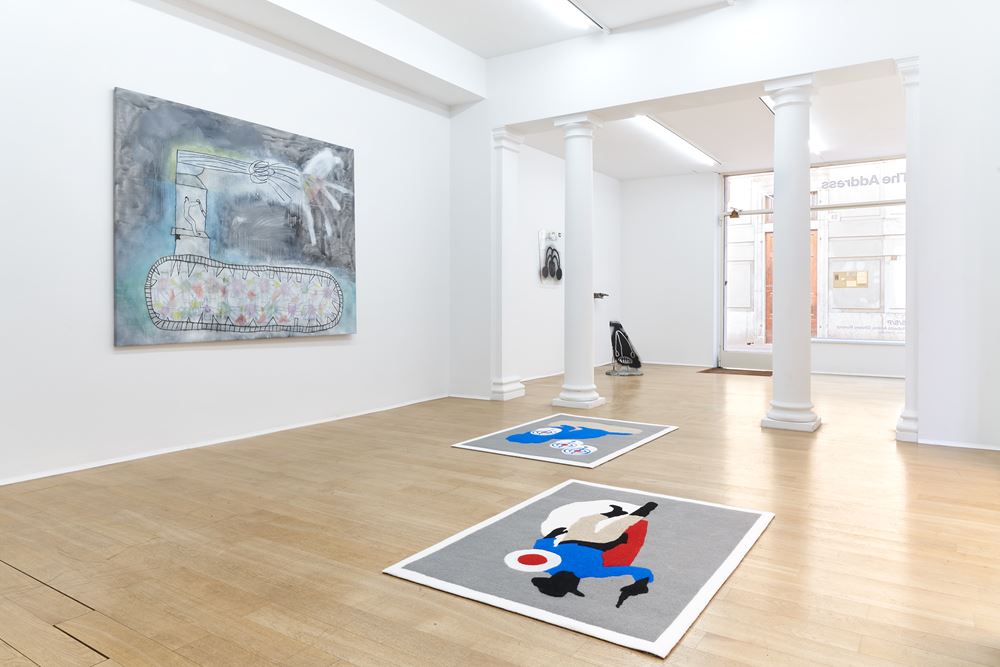The province hides behind the betrayals of the beauty of
things and the pleasures of the eyes. The green valleys,
the lakes and rivers, the plains and the hilly bustles with
their habits, their festivals and fairs, the saints and
the Virgin Maries, all of this have given way to a mixture
where signs and signals are blurred among the peripheral and
rural territories, vulgarize –which, as history demands,
is a translation into known languages– and blend into the
contradictory images that suits the province.
Although silences or the chirping of cicadas heard close
to the dumps or nearby the logistic districts can give
coarse memories of some kind of gaieties, the province has
always lived its historical bovarism: to stay where one is,
dreaming the beyond of the territory, past the natural and
mental landscapes, and to reproduce its own spaces, with
its own dreams and nightmares which characterize the eternal
“isolation” of these places.
Therefore, the horizons of fields, hills, rivers and coasts
become borders together with the thresholds of the houses,
the curled asphalt of the state roads that crosshatch the
landscape. Inside their borders, real and mental territories
fold back on themselves, they tighten and reinvent their
images, dreaming of themselves. Where the gaze rests we find
the obsessions which inhabit the real province, the one
marginalized and rewritten by the persistence of bucolic
narratives and their rural life with its tourism.
These territories defined as “province” are many things
together: they oscillate among claustrophobia and
claustrophilia, they are plural territories. For this reason
the “provincial” imaginary is overloaded by signs and signals,
it is a hodgepodge and it seethe of proto-Pascolinian childs
and Bianciardian workers, of violence, fatigues, and chronic
recreational time.
They are kaleidoscopic visions which, if we want, can remember
the mirages of the heat on the provincial roads, when the
asphalt pitches as the lake when the ferries pass.
They are composed by stickers on motorcycle fairings, graffiti
and inflated writings representing parties and local movements
on the long derelict walls of logistic districts; they are
itinerant carny and posterized faces that depicts “mondine”,
the rice worker, among exotic lions and gunslingers from the
Far West; they are flags and weathercocks waving on boats
and tractors which parade in countries of vague agricultural
memory, as well as compound rows of boats and buoys in
lakes and rivers, carrying old and heavy effigies of
six-fingered saints.
The practices of Roberto Alfano and Oliviero Fiorenzi meet
each other in these areas.
To begin with, the practice of graffiti was a commonplace in
which the artists have elaborated the relationship between
painting and its surfaces, its exhibition, the praised
display, upon which signs went together with the landscape,
leaved to the action of time and its ruined walls, broken
glasses, abandoned factories and whatever surfaces were
capable to manifest a form of recurrence within the landscape.
It was from this common ground that the artists begun to
differentiate their practices.
Roberto Alfano has immersed himself in the atmosphere of
the imaginary of these places, with their redundancy which
nurtured among the fields and took root slowly in those wo
walked through them as a child. We are talking about the
initial pop imaginary on which the artist has focussed for
years, about the redundancies of signs which have innervated
the province: from the Lega to nutrias till the “classicism”
of the bare sheds and so on. Roberto’s work is concerned with
the obsession of sign, the recurrence of experience in those
spaces which seems closed, tight between fields and fogs. In
the gaze that hangs a few meters away, it is easy to lose
rationality and be deceived, and Roberto’s practice is the one
that refers to the inner space occupied by the symbols, figures
and characters which this blurred landscape produces.
They are the memories which fade in the horizon and sediment
nearby, they are the mirage of the gaze, where toys and
childish attitudes come to life, with their dreams and
delusions which are then a mixture of wars and classicisms,
rainbows and tanks.
On the other hand, Oliviero Fiorenzi’s work starts from the
real territory. He works with the environmental, climate
and temporal action with which the open space connotates its
surfaces. The air pierces and makes noise in the surronding
landscapes, it moves the mist at the edge of the horizon, and
what is needed are signals. The research of Oliviero focuses
on the relationship between the pictorial gesture and the
meaning of signals, a practice which represent the landscape
as a visual sign, as the parlance of a language painted in
everything is allowed to eyes: buoys, turrets, carpets,
weathercock; for Oliviero, territories display languages, they
are structures of language. His work could be understood as an
objectual cartography, or an orientation practice which read a
wired alphabet written by a promenade; but, more cynically, it
can be seen also as a result of the idea of property imposed
by signs, with its flags, placards and fencings. So that his
work is to make landscape, to provide tools to read the space
in the recurrence of the pictorial signs that territories
carry with them; signals which become autonomous with the
noise of the wind and the havoc produced by the pounding water
and blades of grass.



 This site uses anonymous technical cookies to ensure navigation and third-party cookies to monitor traffic and to offer additional services such as viewing videos or messaging systems. Without third-party cookies some pages may not work properly. Third-party cookies can track your activity and will only be installed by clicking on the "Accept all cookies" button. You can change your selection at any time by clicking on the "Cookie" link on each page at the bottom left. By clicking on one of the two buttons you declare that you have read the privacy policy and to accept the conditions.
This site uses anonymous technical cookies to ensure navigation and third-party cookies to monitor traffic and to offer additional services such as viewing videos or messaging systems. Without third-party cookies some pages may not work properly. Third-party cookies can track your activity and will only be installed by clicking on the "Accept all cookies" button. You can change your selection at any time by clicking on the "Cookie" link on each page at the bottom left. By clicking on one of the two buttons you declare that you have read the privacy policy and to accept the conditions.